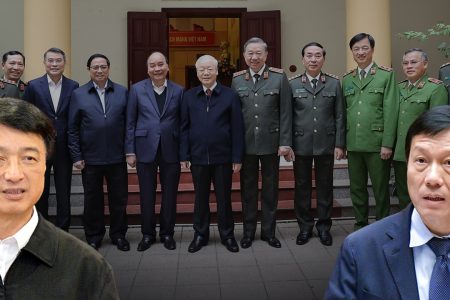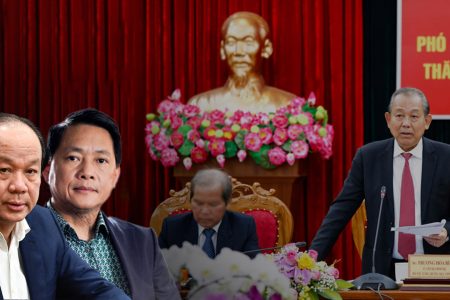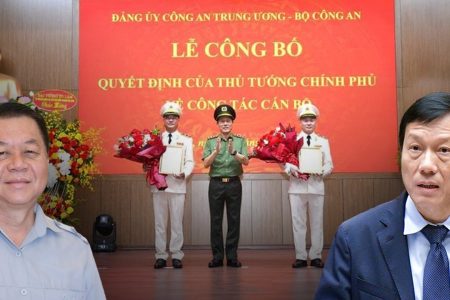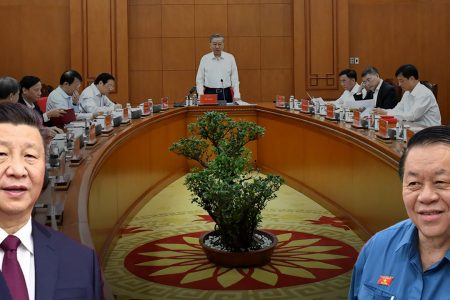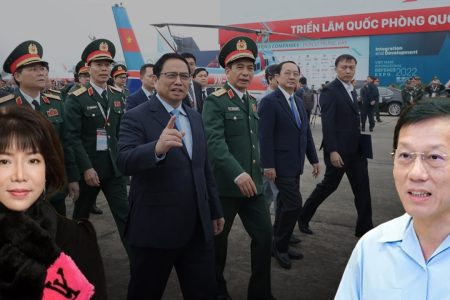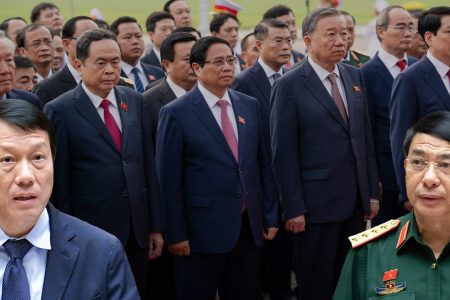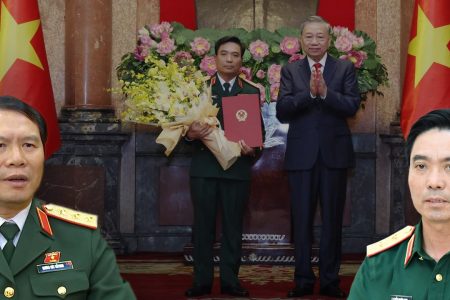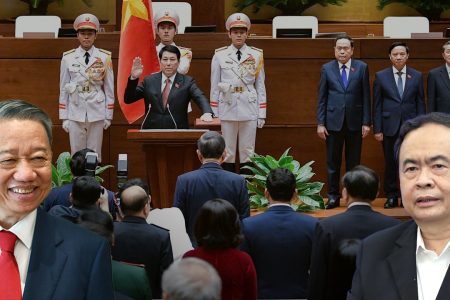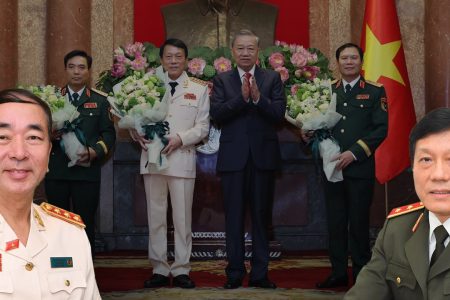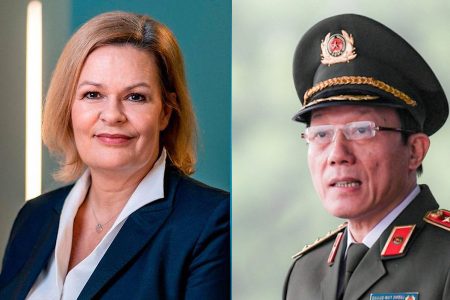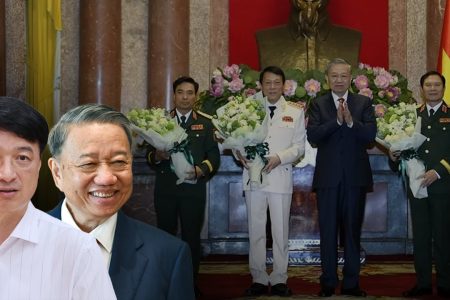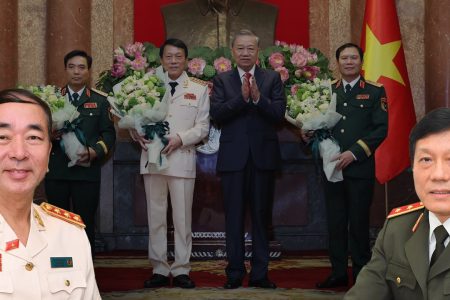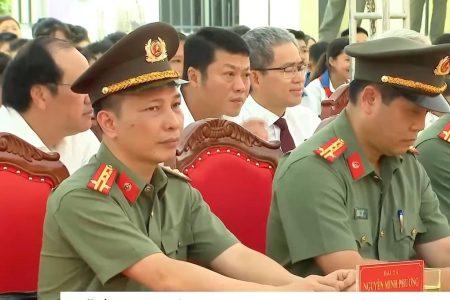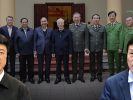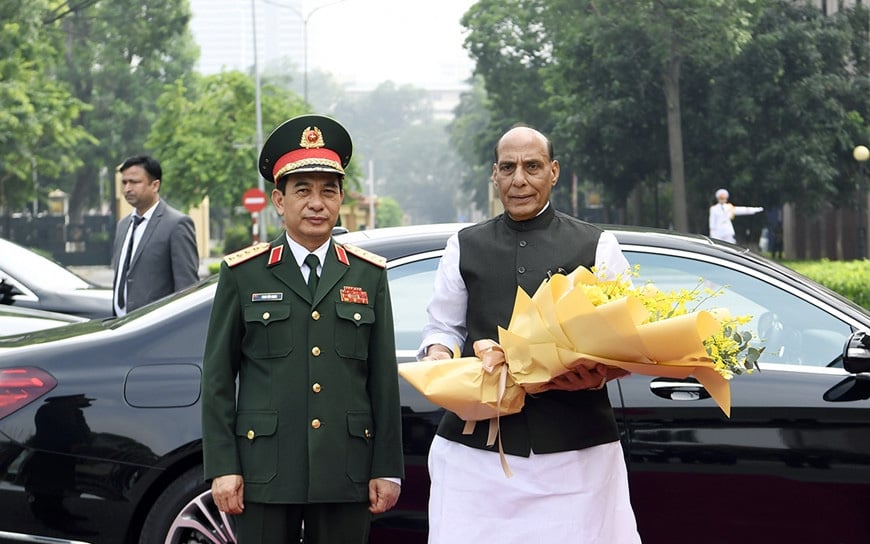
Vietnam – India strengthen ties
At a time when the entire Southeast Asia region is on alert with suspicions about China’s move to expand and renovate Cambodia’s Ream Naval Base, located on the Gulf of Thailand, India’s Defense Minister Rajnath Singh paid a three-day visit to Vietnam on the occasion of the two countries’ 50th anniversary of establishing diplomatic relations.
During the visit to Vietnam by the Indian Defense Minister on June 7-10, the two sides signed the Joint Vision Statement on bilateral defense relations to 2030. This agreement was born in the context of India’s strengthening its presence in the Indo-Pacific as well as enhancing defense links with Southeast Asia.
In addition, the two countries also signed a Memorandum of Understanding (MoU) on military logistical support (the first agreement of its kind in Vietnam), allowing the militaries of the two countries to use each other’s bases for repair and supplies. Since 2016, India has signed six other logistics treaties with countries such as Japan, Australia, France, Singapore, South Korea, and the US. This is a landmark agreement, as it allows warships – including military aircraft of the signatory nation – to refuel and dock at each other’s bases.
India’s Defense Minister’s visit to Vietnam comes just four months after Indian Foreign Minister Jaishankar visited the Philippines, another ASEAN country. It is worth noting that both Vietnam and the Philippines are very strong in speaking out about disputes with China in the South China Sea, while the Indian military is also facing the Chinese People’s Liberation Army (PLA)’s belligerence on the Himalayan frontier.
The visit of the Indian Defense Minister demonstrates the strategic trust of both sides. The Indian Defense Minister visited Vietnam’s military training facilities and handed over 12 high-speed patrol boats to the naval fleets of ASEAN nations built with credit and technical assistance of $100 million from India and is expected to soon be deployed along the South China Sea. In 2016, India extended a credit line of $500 million to Vietnam to supply or jointly produce defense weapons with New Delhi. Vietnam is said to be looking to buy Indian-made Brahmos medium-range hypersonic missiles.
Minister Singh assured India’s full support for Vietnam’s military and signed an important document to enhance the scope and scale of defense cooperation between the two countries titled “Common Vision Statement on India-Vietnam Defense Partnership to 2030.” Since 2016, security cooperation has been an important pillar and an important component of India’s ” East Act policy” and Indo-Pacific vision.
Common threat
A common threat has tied the two nations of Vietnam and India together as China increasingly threatens neighboring regions. The US and the West accuse the Chinese-funded naval base project in Cambodia of being for the “exclusive use” of the Chinese navy, which both China and Cambodia deny. But whatever the truth, this news has a lot to do with Vietnam’s national security policy, perhaps more than any other country in the region.
China’s new presence in the Gulf of Thailand, if realized, would mean a significant expansion of its naval force’s range of operations, providing an important strategic foothold for Beijing in the disputed sea in the Indo-Pacific. Vietnamese fishing boats and oil exploration vessels regularly confront China in the South China Sea, especially near the Hoang Sa (Paracels). China’s Coast Guard and China’s so-called “maritime militia” groups have also imposed an “illegal ban” on Vietnamese ships entering the waters they claim and repeatedly harassing Vietnamese fishermen. Strategy experts hope that Hanoi could also be a potential customer of the Indian-made BrahMos supersonic cruise missile in the future, like Manila. This capability was further enhanced by the warm welcome in Vietnam to the Indian Defense Minister.
From India’s point of view, the strengthening of defense cooperation with Vietnam, which has a coastline of 3,260 km in the South China Sea, means that Vietnam has an increasing role in the security landscape of Southeast Asia. and more broadly the Indo-Pacific. Furthermore, about 55% of India’s maritime trade passes through this region, making defense cooperation a crucial issue of commercial and economic importance for India, along with significant implications on strategy and security. In addition, in the context of the US Navy’s extensive presence in the region, ASEAN’s central role in the Indo-Pacific makes Vietnam an important player in the Indo-Pacific, which India cannot afford to ignore, especially in light of the changing geopolitical landscape.
Future development of Vietnam – India relations
India’s deployment of warships in the South China Sea, or in other words China’s maritime vicinity, has been more than two decades since 2001. The strength and operational readiness of experienced navies like the Indian Navy are the greatest assets New Delhi can use to protect vital national interests in the region, further boosted by the recently signed logistics pact. Indian military strategists are well aware of the potential consequences of China’s complete control of the South China Sea, i.e. extending to the Strait of Malacca, which could essentially bring the Chinese navy closer to the Andaman and Nicobar Islands and to the Indian Ocean.
Today, India’s growing military capabilities, including nuclear potential, are powerful enough to inspire confidence among regional states in India as a responsible partner and can reliably contribute to regional security in Southeast Asia.
Mr. Rajiv Bhatia, an expert at Gateway House, said that Minister Rajnath Singh’s visit to Vietnam was remarkable. According to him, “while the cooperation between India and Vietnam was previously focused on the economic and political fields, the deeper defense cooperation between the two countries has become the focus for recent several years.” He noted “There will be a comprehensive dialogue to promote India-Vietnam relations. In the context of the ongoing US-China competition in the Indo-Pacific, Vietnam plays a particularly important role for both India and the US. It also indicates a common desire to force China to abide by the principles and rules of international law.”
Defense sources predict that India may also give Vietnam a Khukri-class corvette, which is likely the INS Kirpan – a vehicle currently in service with the Indian Navy. This proves the trust and attachment between the two countries.
An Indian defense official stated, “However, the 10-year vision statement between the two countries and the logistics agreement, the first such major agreement chose to be signed by Vietnam with India, reflects the deepening cooperation between the two countries.”
The visit to Vietnam by Minister Rajnath Singh is aimed at further consolidating the bilateral defense ties as well as the comprehensive strategic partnership, the Indian Defense Ministry said. Vietnam, an important country of ASEAN, has a territorial dispute with China in the strategic area of the South China Sea (Vietnam calls it the East Sea).
India, the US, and a number of other world powers discussed the need to ensure a free, open, and thriving Indo-Pacific in the context of China’s strong military activity in the region even though Taiwan, the Philippines, Brunei, Malaysia, and Vietnam all claim it. Beijing has built artificial islands and military facilities in the South China Sea. India has oil and gas exploration projects in Vietnam’s waters in the East Sea. India and Vietnam have been stepping up their maritime security cooperation in recent years to protect their common interests. The visit of the Defense Minister on the occasion of the 50th anniversary of the establishment of India-Vietnam diplomatic relations and the 75th anniversary of India’s Independence will further strengthen the bilateral relationship.
Thoibao.de (Translated)




